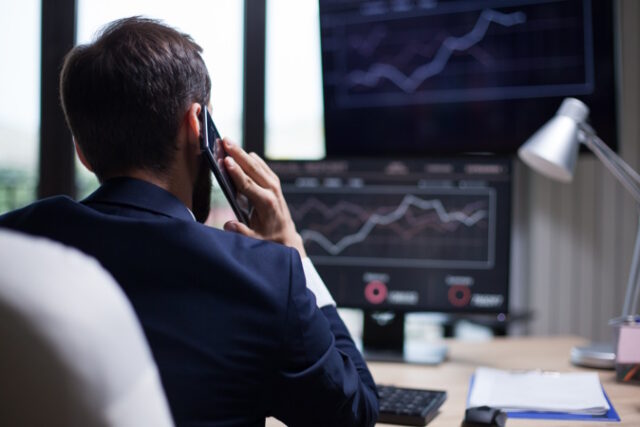
Not so fast, ChatGPT. Artificial intelligence might have a grip on nearly every industry right now, but research suggests that automation simply can’t beat human interaction — when it comes to trading, at least.
A study conducted by researchers from the University of Utah and State University of New York at Buffalo finds that in the stock market, humans working together still have a distinct edge over their robotic counterparts.
Floor brokers are people who traditionally work in an exchange’s “pit” — the ones you might see in movies yelling out frenzied bids. What they do is execute trades for their clients in person. Designated Market Makers, or DMMs, are the other folks physically present on the floor; they provide liquidity and facilitate auctions.
The pandemic helped to set the stage for the research paper, which is set to be published in the Journal of Finance. With the onset of COVID-19, the New York Stock Exchange — the only major exchange in the U.S. that uses human floor traders — forced these traders off the trading floor for several months, relying wholly on electronic-based and algorithmic trading instead.
By analyzing the NYSE before and after this floor closure, the analysts were able to directly examine the performance of human interaction between floor traders and DMMs versus all-digital models.
What the study found
Contrary to what you might expect, humans tended to perform trading duties more effectively.
Price efficiency is one major metric the researchers used to measure human brokers up to their electronic counterparts. Efficiency is the idea that buyers and sellers agree to stock prices based on public information about that stock. (If buyers and sellers are in perfect agreement over the price of a given stock, it means that the price is highly efficient. The more errors a broker makes in pricing a stock, the less efficient that stock’s price becomes.)
The researchers found that there was an increase in pricing errors when human interaction by floor traders was removed from the equation. Without this interaction, the NYSE saw an increase in the frequency of price errors of 2-6%. This means price efficiency tended to be low among trades executed entirely electronically versus those brokered in person.
Moreover, without the presence of human interaction on the floor, the proportional spread — a measure of liquidity based on the difference in a stock’s bid price and asking price — of any given stock on the NYSE saw an 11% increase as compared to that same stock on another exchange.
A higher spread means lower liquidity, and that means the investor must ultimately pay more money to execute their trade. Were electronic liquidity providers able to replicate the duties of a human DMM, the researchers contend that the NYSE would have seen either unchanged or smaller proportional spreads.
But as it turns out, having DMMs physically present on the floor led to smaller spreads than those afforded by algorithms.
The researchers’ findings are worth noting at a time when every day brings new headlines around AI hype and the power of automation. Lots of companies are jumping into the technology with both feet — but, in this specific case, the report suggests that humans working together can still consistently bring better results to clients.
Co-author Dominik Rösch tells Money that these findings largely affect institutional traders or professionals who manage a lot of investments for a big group.
“Traders who trade more frequently or with larger stakes would face more transaction costs due to the loss of the floor,” Rösch says.
However, this very well could affect retail investors who trade with high frequency or bigger stakes, as well. These traders are more likely than others to notice the price slippage between human and automated floor trades.
The takeaway
All said — and amid concerns in certain industries that robots could eliminate the need for human employees — the research gives pause to the idea that automation is a new cure-all technology, at least as far as investing goes.
“Our results show that algorithm[s] have difficulties replacing human beings in complex situations,” Rösch says. “So there is still hope for us to keep our jobs — including the jobs of the average trader.”
Disclaimer
The information contained in South Florida Reporter is for general information purposes only.
The South Florida Reporter assumes no responsibility for errors or omissions in the contents of the Service.
In no event shall the South Florida Reporter be liable for any special, direct, indirect, consequential, or incidental damages or any damages whatsoever, whether in an action of contract, negligence or other tort, arising out of or in connection with the use of the Service or the contents of the Service. The Company reserves the right to make additions, deletions, or modifications to the contents of the Service at any time without prior notice.
The Company does not warrant that the Service is free of viruses or other harmful components
This article originally appeared here and was republished with permission.












